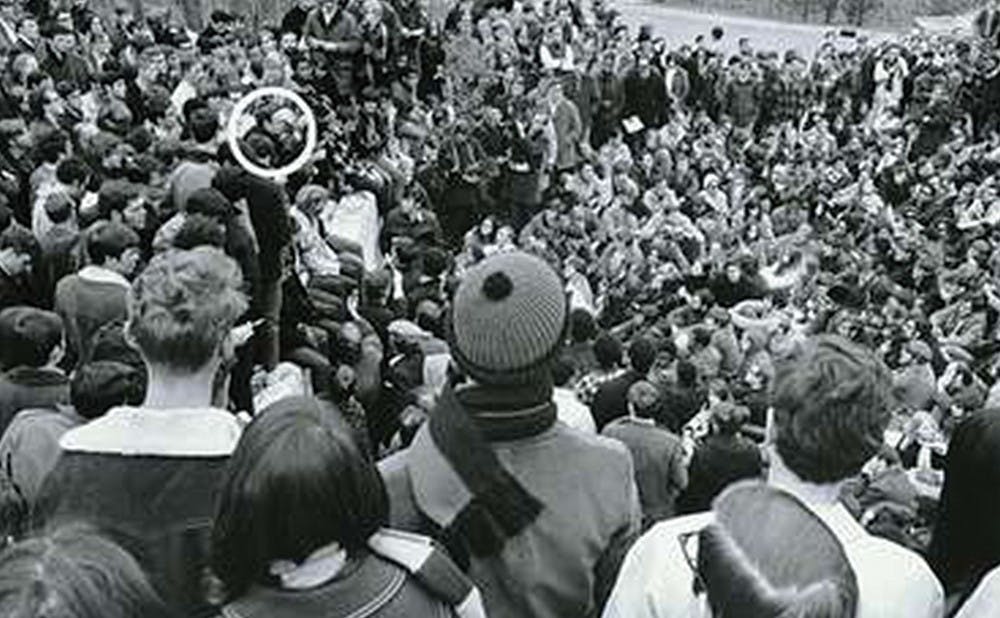Thank you for soliciting our memories on the 50th anniversary of the Allen Building takeover. One of this past week’s events nearly brought me to tears. I viewed the library exhibit and attended a discussion at the Mary Lou Williams Center, where I again saw the list of demands by the African American students. One was to increase the population of black students at Duke to 29 percent by 1973. This demand was so powerful to me because I matriculated to Duke in— you guessed it—1973. That demand, read today, almost felt like they asked for me by name.
My fellow African American freshmen and I heard a lot about the takeover only four years earlier, and we knew that our large class (80 +/-) was a result of Duke heeding the call to increase our numbers. In 1973, there were only four black women in Southgate among the 175 co-ed residents. To make sure we were represented in the dorm meetings, I ran for office, and became Freshmen Rep, then Vice President, then President. Senior year, I became an RA. Our voices were definitely heard in Southgate.
The Modern Black Mass Choir, Dance Black, Durham churches, and Duke’s African American employees literally gave us a sense of home and identity. Black fraternities and sororities began in 1973-74, when so many first generation students knew nothing of Greek life. Bobby Durrah became our first black Blue Devil.
Other memories weren’t so great—an F in Intro to New Testament from a visiting professor (after I’d taught Sunday School since age 14), Duke’s dismissal of many friends for academic performance, and woefully few black faculty. However, my best memories were centered around my “family”—all the black undergrads, grad students and especially alumni, who were always there for us. We survived Duke together, and today we are more than friends and classmates. We’re literally brothers and sisters, with bonds so deep they can never be broken.
I'd also like to direct your attention, in this 50th year Allen Building anniversary, to two Duke publications that were very important to the African American community at the time they appeared. I was fortunate to have two of my poems published in these publications.
First, the 1974 Chanticleer (Vol. 62) contained what we believed at the time was the first inclusion of African American students in the yearbook, where 10 pages of photos of black students and the black community, along with my poem, "In Contradiction of "America Is My Home" were included, surrounded by black background pages (pp. 102-112). We were elated at the time that the student editors and staff of the Chanticleer recognized our presence on campus in the 1974 yearbook.
Second, I was also honored to represent us in the Fall 1974 literary publication, The Archive (Vol. 87, number 1), where my poem, "Bubble Gum Machine" was published.
To have been a freshman and have my words permanently included in the history of Duke still remains among the highlights of my time at Duke University, and is part of the history of African American students who have attended our great university. Perhaps this shows how far we had come after the courageous stand taken by our alumni brothers and sisters during the Allen Building takeover.
Fredessa (Freddi) Hamilton, Ph.D. T '77
Get The Chronicle straight to your inbox
Sign up for our weekly newsletter. Cancel at any time.

